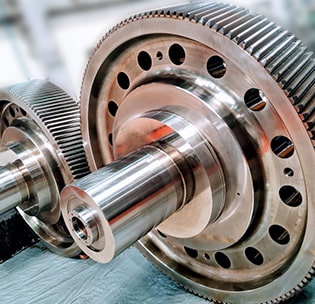Whenever a gearbox breaks down unexpectedly, it leads to disruptions in the workflow, lowers productivity, hampers production goals, and tends to increase the labour and production costs for a certain project. Not to forget, Gearbox repair in India could be tricky and time-consuming for many industries battling to meet the rising consumer demands.
To actively resolve the damage without any negative impact, it needs to be in place as quickly as possible. The Gearbox refurbishment is cheaper when carried out at the early stage of the damage. Later, the entire unit may need replacement causing a costly and time-consuming affair.
What is an Industrial Gearbox?
An industrial gearbox is constant torque equipment designed to transmit motion without slip. The gearbox is generally used to increase or reduce speed and is widely used in power generation, transmission and process applications. The gearbox construction and its shaft orientations depend on industrial application and plant layout.
What is the process for Industrial Gearbox Overhaul?
A gearbox overhaul, also known as Gearbox repair or gearbox rebuild, typically involves disassembling the gearbox unit and breaking it down into separate components for inspection. Then, the technician cleans and examines each gearbox component for its useability, repair OR replacement.
Though it takes time, it carries the advantage that the process is so thorough that it fixes the immediate issue, and prevents serious problems from occurring in the future while also leaving scope for keeping the gearbox updated.
The Gearbox repair process takes a deep understanding of the turnaround time, cost, and the scope for improvement for power, and speed upgrades and also to enhance maintainability and reliability.
Initial Inspection
The gearbox undergoes inspection for possible visible damage such as wear and tear, scoring, pitting and loose assembly, etc. This process determines the physical condition of gear parts and bearings.
- Disassembly Phase
This includes the disassembly of all gear parts and bearings from the casing.
- Failure Analysis
The damaged parts are analyzed using NDT (Nondestructive test) and DT(Destructive test) processes to evaluate surface and subsurface defects. This provides proper information and the probable cause for the breakdown, helping the engineers to take precautions to avoid similar failures in future. Based on the cause countermeasures also will be devised to enhance reliability.
- Costing & Approval for Gearbox Repair
After the failure analysis report, the scope of repair is defined and recommended to the customer. This allows the service provider to go over every step of the repair and provide the overall cost for the repair of the gearbox components.
- Repair
Once the costs are in place, repair work begins to restore the gearbox to its original capacity in the minimum possible time frame.
- Assembly
After the repair work is done, all components are put back into their original position by installation experts and all assembly parameters of the gearbox is recorded using reliable tools and safety gears.
- Quality Tests
The gearbox undergoes full speed no load tests to record all running parameters (Vibration, Noise and bearing temperatures) to evaluate performance.
Such PDCA(Plan – Do – Check – Act)process in gearbox overhaul and repair ensures the integrity of parts and takes proactive steps for promising long-lasting gear solutions to the customer across the application spectrum.


No comments yet